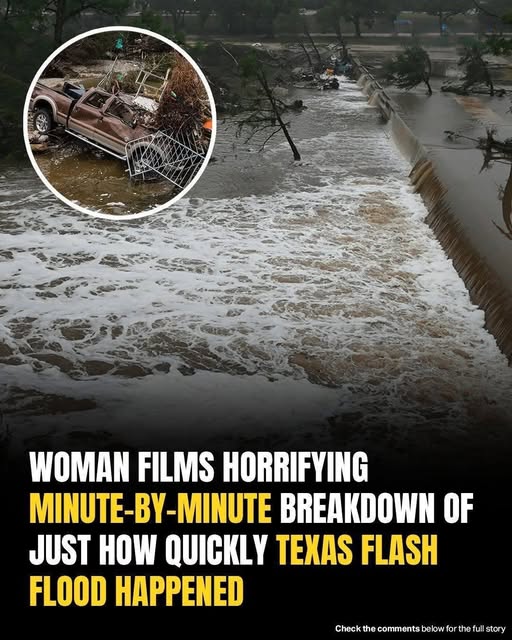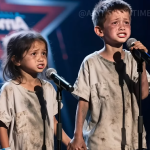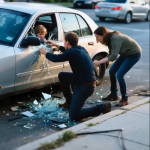A peaceful summer day in Kerr County, Texas, turned into an unimaginable nightmare on July 4, 2025, when a devastating flash flood swept through the region, claiming the lives of at least 51 people—including 15 children—and leaving dozens still unaccounted for. The sudden surge of water transformed calm rivers into raging torrents in a matter of minutes, overwhelming roads, sweeping away vehicles, submerging homes, and stranding hundreds without warning.
Among the most heartbreaking parts of this tragedy is the fate of Camp Mystic, a well-known summer retreat nestled just south of Kerrville. Home to 750 girls during the holiday weekend, the camp was cut off from the outside world as floodwaters rose rapidly. With no WiFi, electricity, or running water, parents were left in agonizing silence, desperate for updates. Up to 20 girls from the camp remain missing, sparking a massive search-and-rescue operation that has drawn in emergency crews, helicopters, and volunteers from across the state.
Texas Lieutenant Governor Dan Patrick addressed the state in a somber briefing, urging families to remain calm amid growing panic. “We are hopeful that many of the children who are currently unaccounted for may simply be out of communication range,” he said. But for many, hope is running thin, replaced with heartbreak and unanswered questions.
The true horror of what happened began to circulate online as video footage captured the storm’s swift and merciless force. One viral timelapse shared on Twitter shows a quiet stretch of road vanishing beneath a torrent of brown, debris-laden water within minutes. The stark contrast between calm and chaos plays out like a scene from a disaster film, only this was all too real.
Another clip, posted on TikTok by user @kelseycrowder_, has drawn widespread attention and debate. In the video, a family is seen relaxing near the Frio River, seemingly unaware of the danger approaching. As the footage progresses—documented from 5:43 p.m. to 6:45 p.m.—the camera captures a surreal transformation: the peaceful waters morph into a deadly current, creeping higher and faster until the once-dry ground is swallowed completely. Near the end, a helicopter whirs overhead, a haunting symbol of urgency and perhaps too-late rescue efforts.
Criticism over the response has been swift and unforgiving. Many on social media pointed to the alleged shutdown of certain National Weather System alert services due to budget cuts, suggesting that a timely warning might have saved lives. “How could they not know? How could they not warn us?” wrote one user on X (formerly Twitter). The question echoed across platforms, mingled with grief, rage, and confusion.
Some also directed anger toward families seen in videos lingering too long near the flood zones. “Why didn’t they leave sooner?” questioned one commenter. Others came to their defense, arguing that the speed of the flood was beyond anything anyone could’ve anticipated. “It happened so fast,” said one eyewitness. “We went from safe to stranded in less than an hour. You don’t expect the river to rise five feet while you’re still standing there.”
Governor Greg Abbott, in a late-night press conference, announced an extended state of emergency across Texas. He assured residents that all available resources—from National Guard units to federal aid—would be deployed to assist with recovery, search operations, and emergency relief. “Texas grieves tonight,” he said, visibly shaken. “But Texas will also rise.”
The National Weather Service has since issued revised flood advisories across the state, warning that conditions remain unstable due to saturated ground and lingering storms in the Gulf region. Meanwhile, families across Kerr County and beyond wait for word—any word—about their missing loved ones.
Among the only rays of light in this grim story was news that one young girl was found alive twelve miles downstream. She had been swept away from Camp Mystic but miraculously clung to a piece of driftwood and was spotted by a rescue team at dawn. Her survival has given rescuers hope that more may still be found.
But for many families, the worst has already been confirmed. Mourning has begun. Makeshift memorials now line fence posts and road signs near Kerrville—flowers, stuffed animals, candles, photos of smiling children who were here one day and gone the next. Churches have opened their doors for vigils, and counselors are being dispatched to assist both survivors and those still waiting for closure.
As the floodwaters recede, a different kind of storm builds—one made of grief, accountability, and public outrage. Investigations are underway into the region’s preparedness, communication breakdowns, and whether more lives could have been spared.
For now, the people of Kerr County face the painful task of rebuilding, not just homes, but the very fabric of their community. And as the haunting images of July 4 continue to circulate online—roads washed away, homes underwater, parents weeping at emergency shelters—one thing is clear: this was more than a natural disaster. It was a warning, and a tragedy no one will forget.


